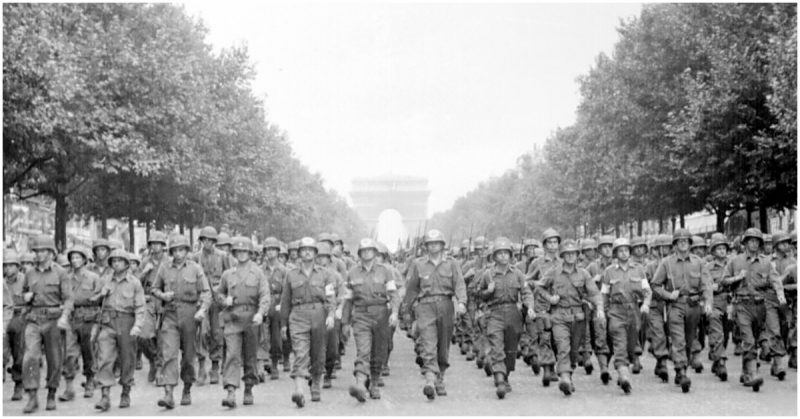Barring destroying or capturing German troops near or in the capital, “Ike” hoped the Germans would retreat beyond the City of Light and leave the capital relatively unscathed.
After the fire that recently engulfed and destroyed much of Notre Dame cathedral in Paris, French president Emmanuel Macron went on TV and addressed the French nation and the world.
Along with promising to rebuild the church within five years, Macron described Notre Dame as the center of France: “Notre Dame is our history, it’s our literature, it’s our imagery. It’s the place where we live our greatest moments, from wars to pandemics to liberations.”
During the Siege of Paris in 1870, when the Prussian Army had the City of Light surrounded and people began to starve, Notre Dame was where many went to pray, and where the Catholic Church attempted to alleviate the suffering brought on by the Franco-Prussian War.
When the Germans once again were driving on Paris in WWI, Notre Dame is where people went to pray for a victory that would stop the Germans before they reached the city. In WWI, those prayers were answered. In WWII, they were not, but when the city was declared free on August 26th, 1944, Notre Dame became the center of Paris, and of France, once again.
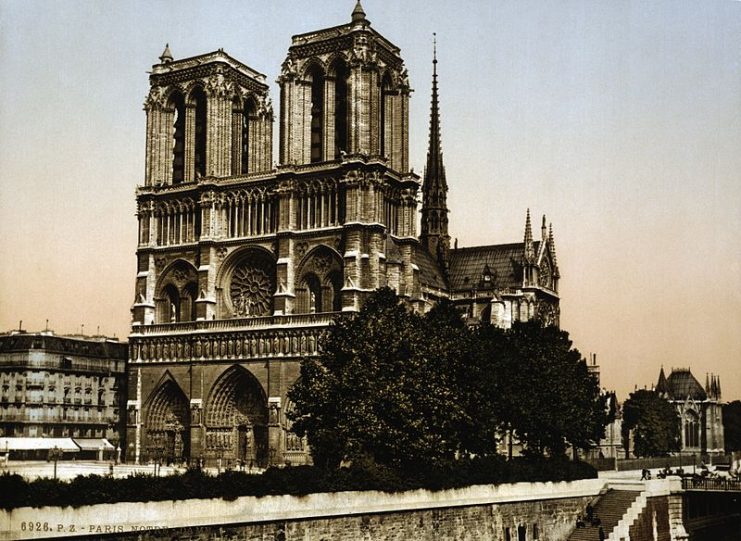
The liberation of France’s capital from German occupation had begun some days before, when elements of the French Resistance rose up on the 19th and began to build barricades and to attack German outposts and armories in the city.
https://youtu.be/JM1vOYQr1vI
By this time, the Germans in northern France were in a state of disarray, fighting a growing force of American, British, and Commonwealth troops as well as Free French forces.
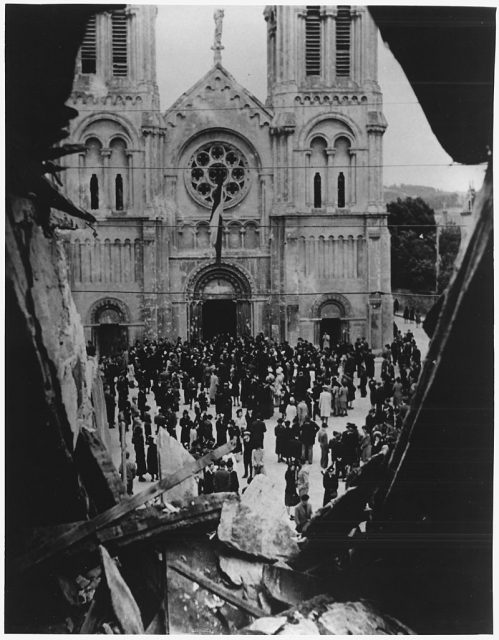
Making things more confusing for the Germans were conflicting orders they were receiving from their high command. Hitler, showing himself to be the maniac that he truly was, ordered Paris razed to the ground. His commanders, in Paris and in Germany, were resisting that order. In the end they thankfully prevailed simply by ignoring his orders altogether.
Still, for a couple of days, it was touch and go, but German troops in the city knew their time in Paris was coming to an end.
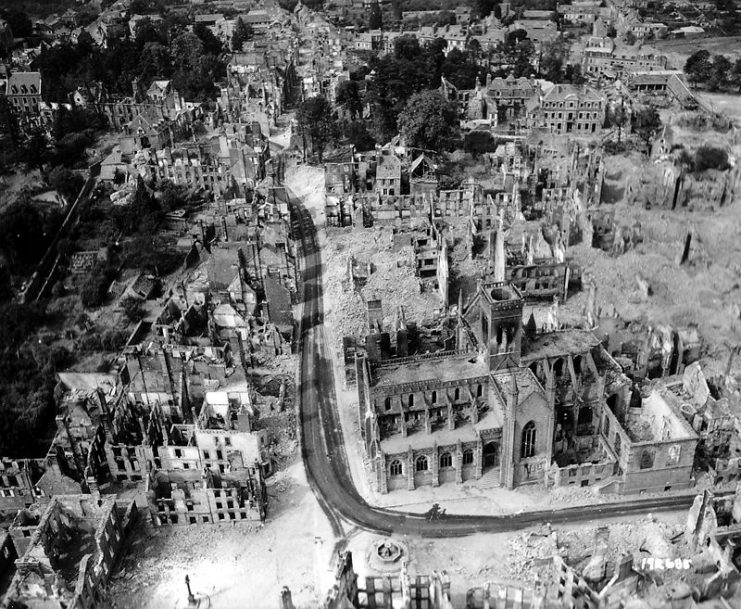
Eisenhower was hoping to destroy most of the German troops in the area outside of the city, both to limit casualties and to spare the beautiful French capital the destruction that he knew a pitched battle would entail. Barring destroying or capturing German troops near or in the capital, “Ike” hoped the Germans would retreat beyond the City of Light and leave the capital relatively unscathed.
Paris did not see the fighting that took place in other cities during the war, and most of its buildings, artworks, and famous boulevards remained undamaged, except for those roads whose paving stones had been torn up to make the famous barricades that Parisians have raised to fight their enemies throughout history.
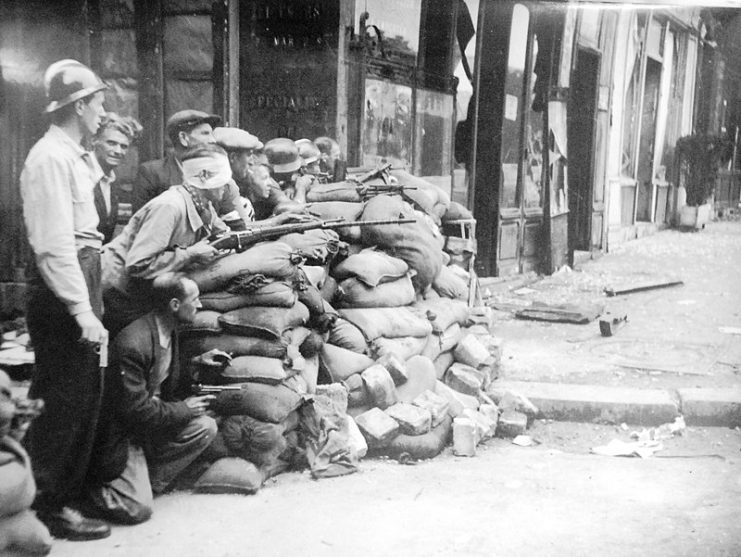
Inside Paris, the forces of the Resistance wished to show that they were a force to be reckoned with and that they would need to be consulted about France’s post-war future. They were also desperately patriotic and saw this moment as their chance to strike back against a weakened and harried enemy and exact revenge for four years of Nazi oppression.
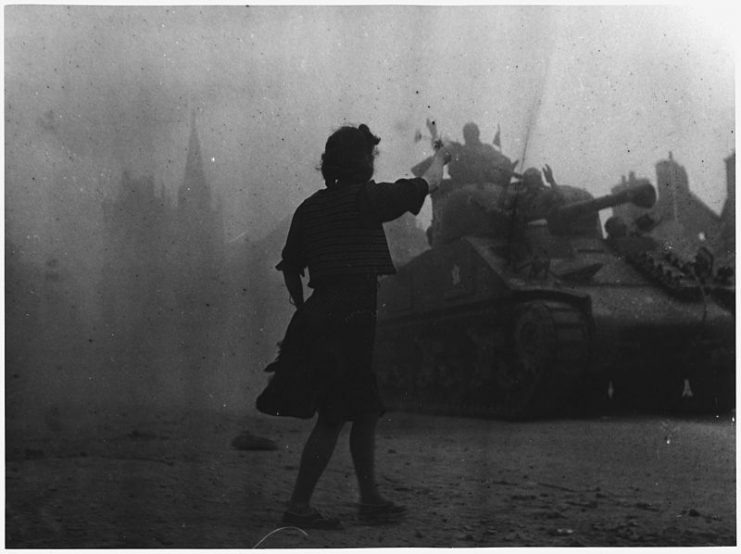
Those of you familiar with WWII newsreels will know of the famous clip of Resistance fighters on a Paris balcony, preparing and throwing Molotov cocktails at a speeding German troop carrier, setting it and the troops inside it ablaze. As the German soldiers burn, French patriots ignore them to gather their weapons.
Bad documentaries will use this clip when describing uprisings against the Germans elsewhere, but it took place in Paris and could not be more symbolic of how most Parisians felt about their German oppressors.
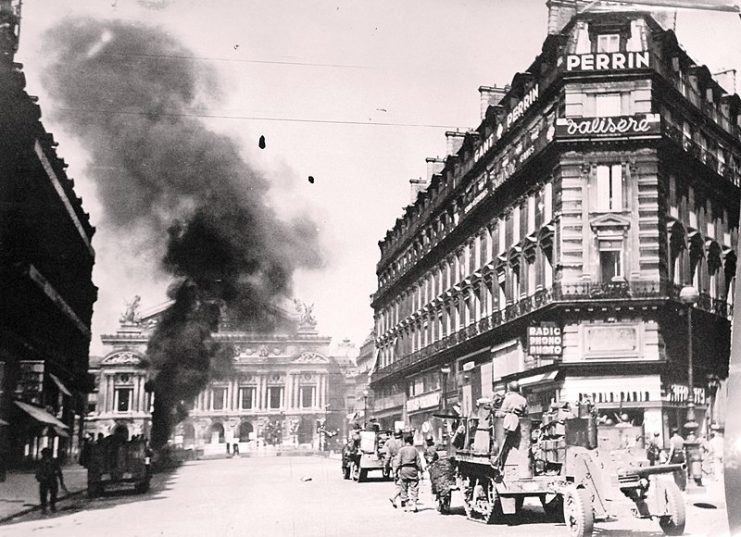
The forces of the French Resistance inside Paris and elsewhere were not monolithic. Many with just a passing interest in WWII history believe that all of the members of the Resistance were members of the FFI (Forces Francaises de l’Interieur, or the “French Forces of the Interior”) under the overall command of Charles de Gaulle. This was not the case.
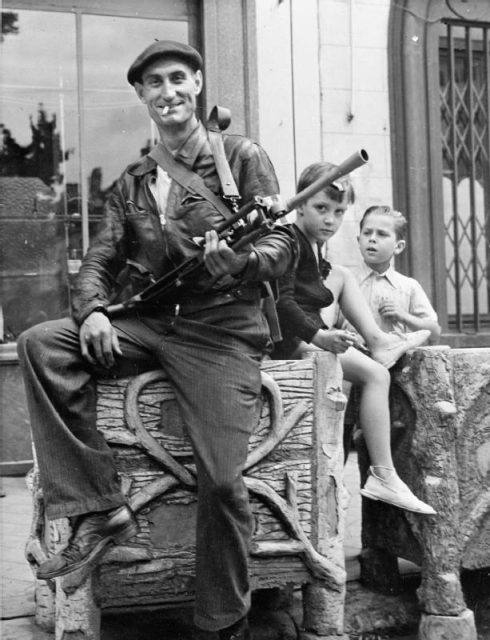
In Paris and throughout France, many different resistance groups existed from all ends of the political spectrum. In many places, forces of the French Communist Party were much stronger than those of the FFI. Towards the end of the war, these groups began to coordinate more and more effectively, but not all of them recognized de Gaulle as their leader.
De Gaulle was all too aware of this and was bound and determined to change that. Notre Dame, through both accident and intent, was part of his planning.
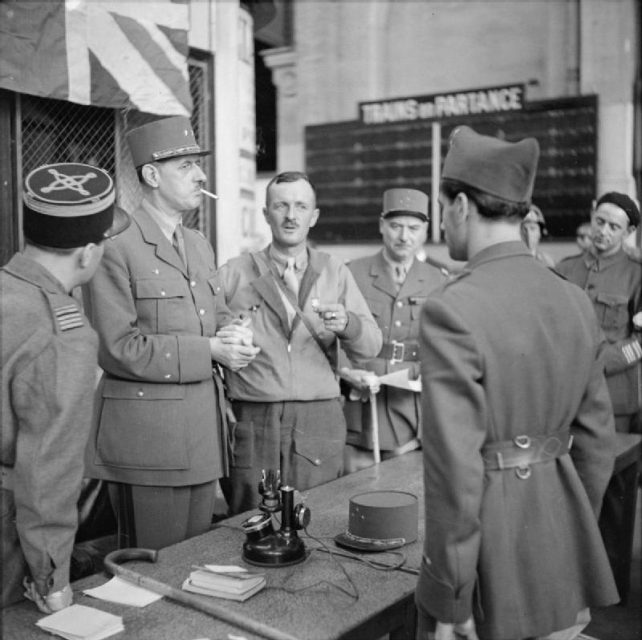
Outside the city, elements of the Free French armed forces commanded by General Philippe Leclerc (whose superior was de Gaulle), chomped at the bit to enter their capital, fight the hated Germans, and liberate the city without the help of the Allied troops in the area.
As rumors of Hitler’s orders reached Allied leaders, more and more pressure was put on Eisenhower to liberate the city. At the same time, de Gaulle and other Frenchmen, including Leclerc, were demanding that French troops be the first Allied troops into the City of Light.
It was not a hard decision for Eisenhower, and he gave the green light to the Free French.
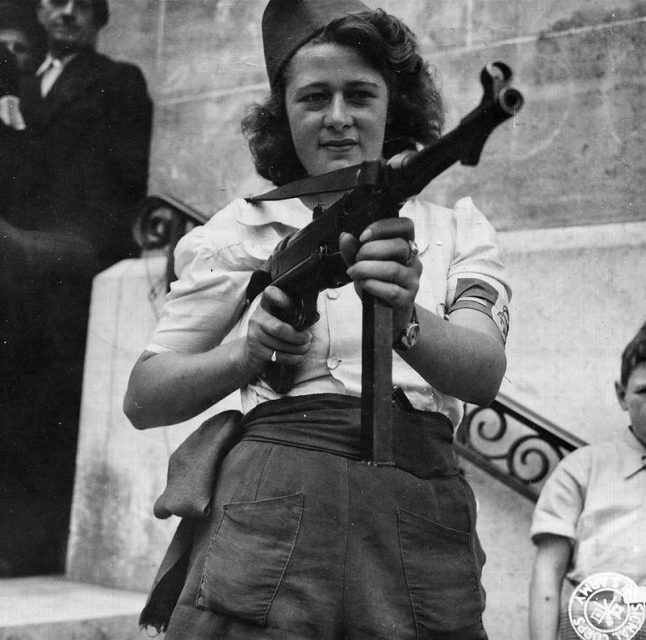
They entered the heart of the city on August 25th, and by the afternoon, had received the surrender of the man who refused Hitler’s orders to torch it. Still, there had been some brutal small-unit actions within the city and on the 25th, certain elements of the German forces refused to surrender.
When all was said and done, some 1,600 resistance fighters were killed, as were nearly 150 Free French soldiers. German losses were higher, at over 3,000 dead and nearly 13,000 prisoners.
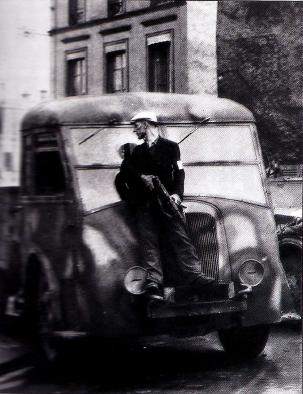
Throughout the 25th and into the 26th, hardcore elements of the German Army, SS, and Gestapo fought on, many of them taking up snipers’ roles and inflicting many casualties. Though it is bizarre to say, for the future and the legend of Charles de Gaulle, this ended up being a good thing.
The Free French leader, surrounded by representatives of other French political movements and his own aides, entered the city on the 25th. He immediately went to the Hotel de Ville (City Hall), and made a speech which is remembered in France today. Remember, de Gaulle was a patriot, but he was also a politician who knew how to appeal to the pride of a wounded France.
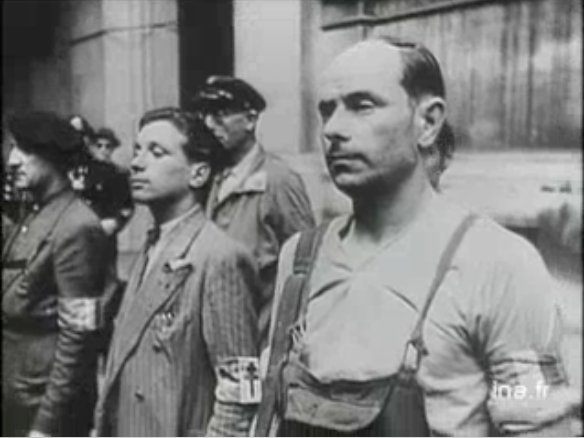
The most famous part of his speech was: “We will not hide this deep and sacred emotion. These are minutes which go beyond each of our poor lives. Paris! Paris outraged! Paris broken! Paris martyred! But Paris liberated! Liberated by itself, liberated by its people with the help of the French armies, with the support and the help of all France, of the France that fights, of the only France, of the real France, of the eternal France!”
He then led his entourage down the Champs Elysees, through the Arc De Triomphe and moved on to what Macron just called “part of us” – Notre Dame.
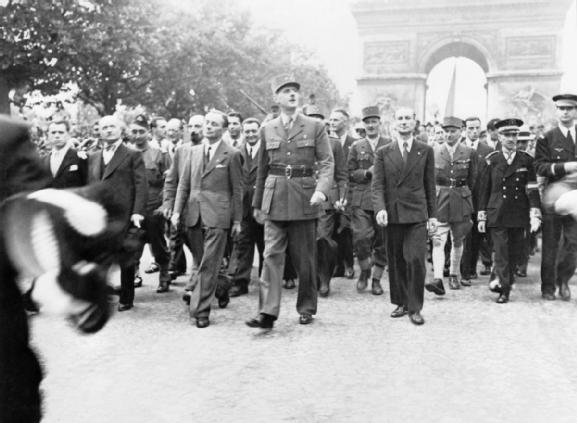
Charles de Gaulle did not lack physical courage. In WWI, he had repeatedly infiltrated German lines to bring back important intelligence. He had been shot, bayoneted and gassed. He had been held prisoner for two years.
He was also six and a half feet tall – a remarkable target for a sniper, and snipers had been taking a toll among Parisians for days. They also fired into de Gaulle’s entourage. By all accounts, de Gaulle never flinched, ducked or sought cover, and it added to the reputation he had been building for four years.
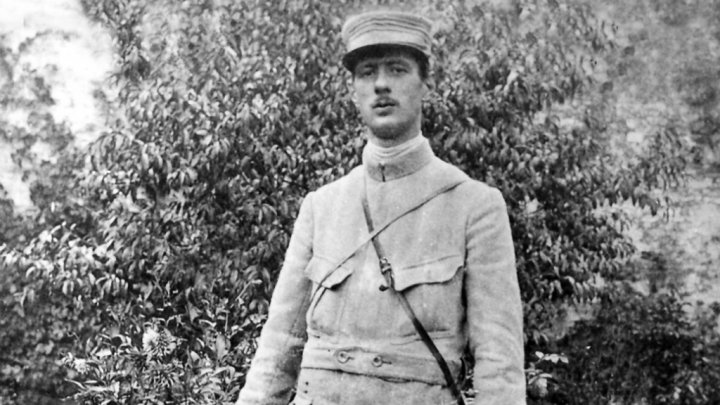
The ultimate goal of the entourage was Notre Dame, where the generals, politicians, resistance fighters, soldiers and Parisian civilians that had joined the march were going to say a prayer of thanks and of remembrance.
Snipers and the odd German machine-gunner began to fire on the crowd – not only as they approached the cathedral, but from inside – hidden high in the famed Gothic arches of the church.
War correspondent Helen Kirkpatrick was there, and made a radio broadcast on what she saw and experienced: “And now here comes General de Gaulle.
The general’s now turned to face the square, and this huge crowd of Parisians [machine gun fire]. He’s being presented to people [more machine gun fire]. He’s being received [shouts and shots].
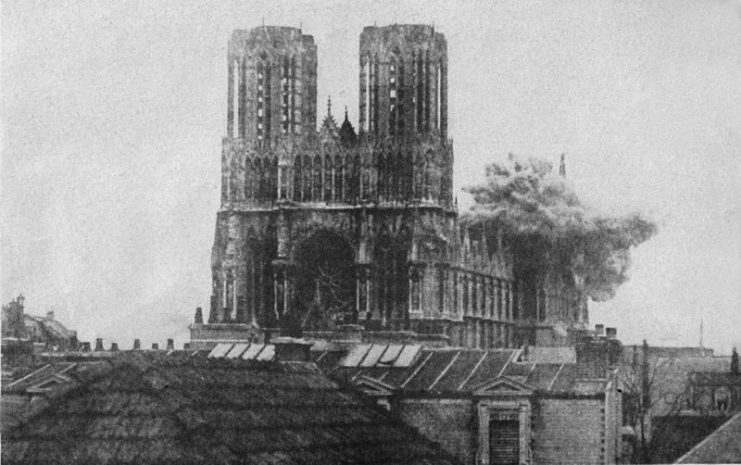
“He’s being received even while the general is marching [more fire]—even while the general is marching into the cathedral…Well, that was one of the most dramatic scenes I’ve ever seen.
“Just as General de Gaulle was about to enter the Cathedral of Notre Dame, firing started all over the place. I’m afraid we couldn’t get you the noise of that firing because I was overwhelmed by a rush of people who were trying to seek shelter.
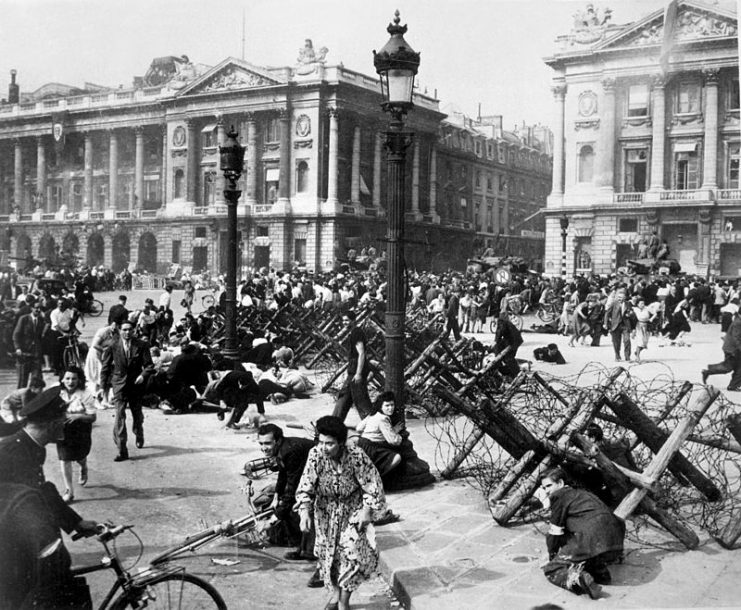
Read another story from us: Collaboration & Resistance: Life in Paris During WWII
“He walked straight ahead in what appeared to me to be a hail of fire from somewhere inside the cathedral – somewhere from the galleries up near the vaulted roof. But he went straight ahead without hesitation, his shoulders flung back, and walked right down the central aisle, even while the bullets were pouring around him. It was the most extraordinary example of courage that I’ve ever seen.”
That is how the legend of Charles de Gaulle was cemented in France, and it shows how central Notre Dame is to France and French history.
